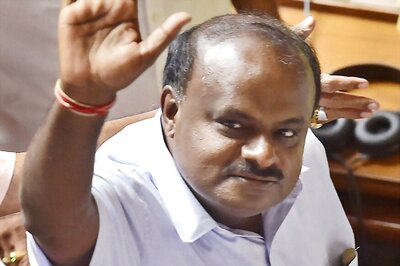
views
Amid the pandemic, when local authorities began laying the groundwork for providing potable tap water connection to every rural household in 2020, it seemed like a long-drawn task. Over 254 villages spread across the district, whose 60% of the total area is covered by forests, accessibility was a challenge that required careful manoeuvring.
“There were concerns for safety, and we had to adhere to the Covid protocols and restrictions. There were long delays, and disruptions, but, somehow, the basic survey was completed in nearly four months, and by September, the tender process had begun," district chief engineer Partap Bundela tells News18.
During the next few months, as the first wave of the pandemic rose and receded, and the state underwent a power transition, with by-poll for over 28 Assembly seats, work on the government’s Har Ghar Jal scheme resumed.
Two years down the line, the district has become the first in the country to provide potable water connection to every rural household. The entire mission was completed at a total cost of Rs 129 crore.
While as many as 111 districts across states, too, have reported completion of targets, Burhanpur is the only one which has been able to get it certified after people from all 254 villages passed a resolution in the Gram Sabha and certified that they have access to safe drinking water through tap.
GROUNDWATER CRISIS
With large areas of the district covered by plantation of water-intensive sugarcane and banana, the groundwater levels, too, have plummeted. According to district officials, there were several villages, where the tube-wells are dug up to nearly 1,000 feet in order to draw enough water to irrigate crops. Some villages still have functional wells to meet water requirements.
“The quality of water was not so much of a concern as was the water level. On an average, most of the tube-wells were at a depth of 800 ft, with a few of them even at 1,000 ft. The hand pumps which were installed earlier had also run dry. As at least 161 villages already had tap water connection before the scheme, a lot of retro-fitting had to be done," says Bundela. This also involved reaching particularly remote villages such as Nananagri, Gadhi and Paachori, he added.
People across the 254 villages now pay Rs 60 to Rs 100 for a tap water connection, with an assured water supply, during the specified hours. With tap connections set up, their operation, maintenance and repair is left to the village water and sanitation committees, which is also responsible for collecting user-charges that are deposited in a bank and are used for paying the pump operator’s salary and to carry out minor repair work from time to time.
THE JOURNEY
While the government had announced Jal Jeevan Mission- Har Ghar Jal in August 2019, the necessary guidelines to steer the mission were not released until December. Just when the states were gearing up to conduct surveys across villages, the pandemic hit the world, stalling the ongoing work.
When the mission took off in 2020, only 37,241 (36.5%) rural households of the total 1 lakh households had access to potable drinking water. Now, not only all households, but all 640 schools, 547 aanganwadi centres and 440 public institutions of the district have access to functional tap water connection.
Despite Madhya Pradesh being one of the 13 districts identified by the Jal Shakti ministry, where 95% of the residual work is yet to be completed, Burhanpur has managed to complete the project in time.
Apart from MP, Uttar Pradesh, West Bengal, Rajasthan, Tamil Nadu, Karnataka, Jharkhand, Odisha, Maharashtra, Kerala, Andhra Pradesh, Assam and Chhattisgarh are still far behind in achieving the 2024 target set by the government for completion of the mission. The states have now been asked to award all works for the implementation of Jal Jeevan Mission by December 2022, which gives them one year to execute it.
Till date, as many as 111 districts and 1.57 lakh villages are reported to have provided tap water connection to each of their rural households, however, they are yet to be certified.
Read all the Latest News India and Breaking News here


















Comments
0 comment